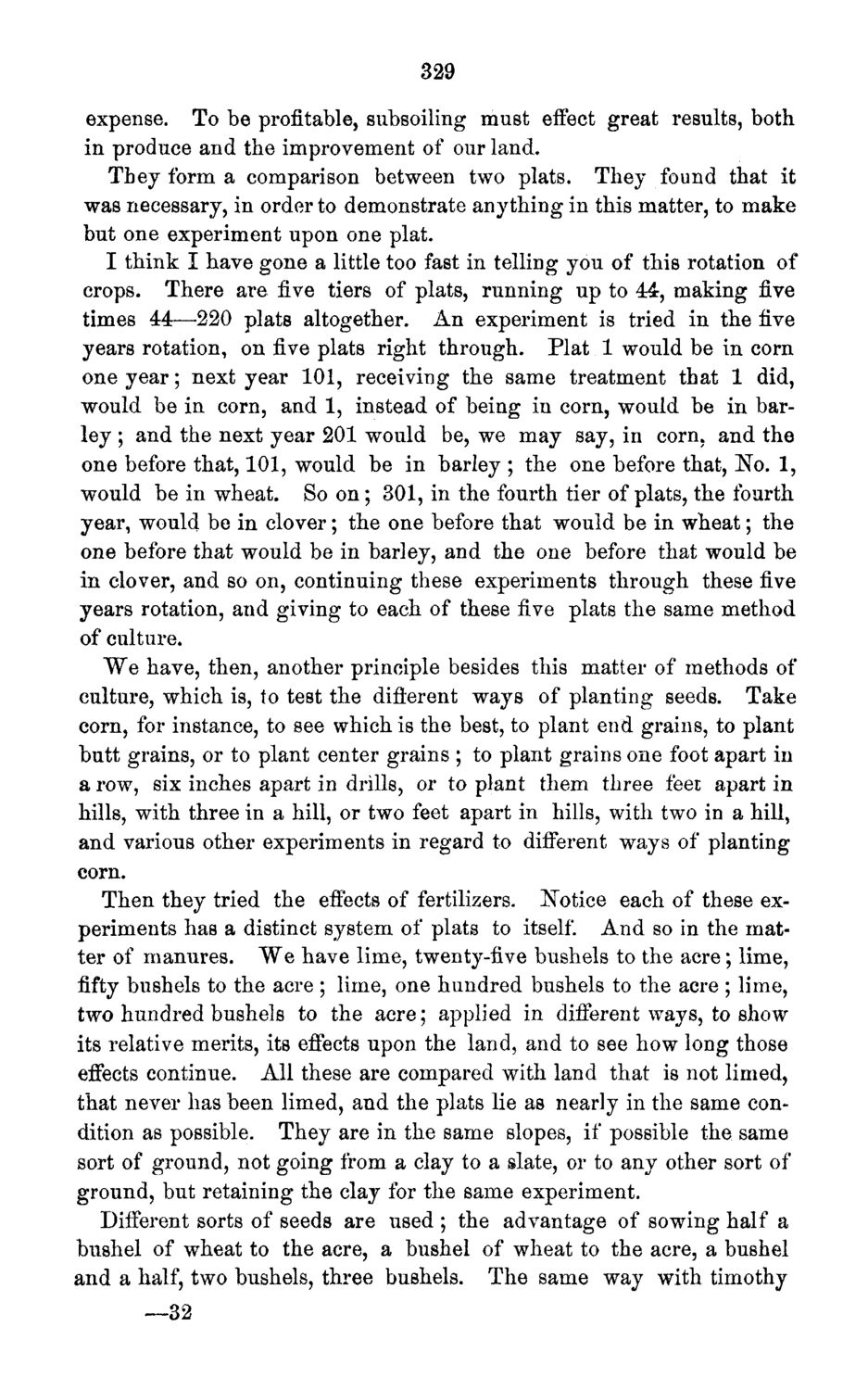| |
| |
Caption: Board of Trustees Minutes - 1871
This is a reduced-resolution page image for fast online browsing.

EXTRACTED TEXT FROM PAGE:
329 expense. To be profitable, subsoiling must effect great results, both in produce and the improvement of our land. They form a comparison between two plats. They found that it was necessary, in order to demonstrate anything in this matter, to make but one experiment upon one plat. I think I have gone a little too fast in telling you of this rotation of crops. There are five tiers of plats, running up to 44, making five times 44—220 plats altogether. An experiment is tried in the five years rotation, on five plats right through. Plat 1 would be in corn one year; next year 101, receiving the same treatment that 1 did, would be in corn, and 1, instead of being in corn, would be in barley ; and the next year 201 would be, we may say, in corn, and the one before that, 101, would be in barley ; the one before that, No. 1, would be in wheat. So on; 301, in the fourth tier of plats, the fourth year, would be in clover; the one before that would be in wheat; the one before that would be in barley, and the one before that would be in clover, and so on, continuing these experiments through these five years rotation, and giving to each of these five plats the same method of culture. We have, then, another principle besides this matter of methods of culture, which is, to test the difterent ways of planting seeds. Take corn, for instance, to see which is the best, to plant end grains, to plant butt grains, or to plant center grains ; to plant grains one foot apart in a row, six inches apart in drills, or to plant them three feet apart in hills, with three in a hill, or two feet apart in hills, with two in a hill, and various other experiments in regard to different ways of planting corn. Then they tried the effects of fertilizers. Notice each of these experiments has a distinct system of plats to itself. And so in the matter of manures. We have lime, twenty-five bushels to the acre; lime, fifty bushels to the acre ; lime, one hundred bushels to the acre ; lime, two hundred bushels to the acre; applied in different ways, to show its relative merits, its effects upon the land, and to see how long those effects continue. All these are compared with land that is not limed, that never has been limed, and the plats lie as nearly in the same condition as possible. They are in the same slopes, if possible the same sort of ground, not going from a clay to a slate, or to any other sort of ground, but retaining the clay for the same experiment. Different sorts of seeds are used ; the advantage of sowing half a bushel of wheat to the acre, a bushel of wheat to the acre, a bushel and a half, two bushels, three bushels. The same way with timothy —32
| |